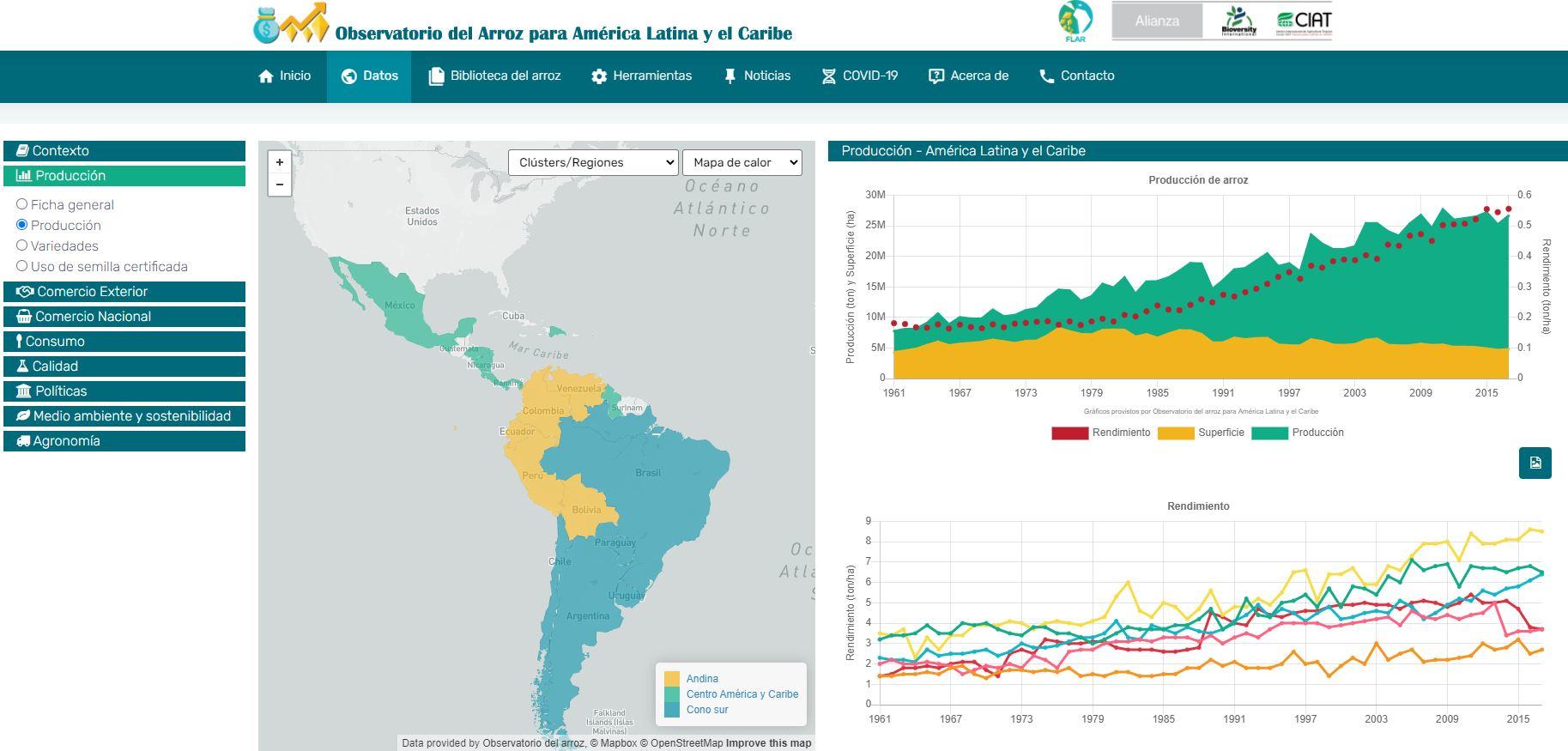Press and News Where is my crop? Data-driven Initiatives for Rice and Cassava Analysis

Globally there is an explosion of digital data across all sectors of society, and agriculture is no exception. With such a deluge of data now available, it has become essential to create solutions that organize, analyze, and visualize it to gain actionable insights. These insights can guide intended audiences to make better, faster, and smarter decisions that lead to transformative action. Applying data-driven insights to agriculture leads to choices that reduce poverty, feed the world while improving nutrition, combat climate change and protect our environment.
The Alliance of Bioversity International and CIAT continuously works to provide such tools to enhance crop awareness and relevant decision-making using a set of diverse indicators. The Rice Observatory and the soon to be launched Cassava Lighthouse combine open-access datasets with the Alliance’s research data. The open-access data is drawn from various international and national institutions and encompasses information on breeding, agronomy, and socio-economic variables of interest. These two tools make sense of relevant historical and timely updated information to strengthen value chain actors’ decision-making. These platforms incorporate data on crop production, productivity and consumption, trade and competitiveness, policies and incentives, genetics and breeding, and pests and diseases.
Even though the observatory indicators are quite diverse, together they generate a complete overview of the rice and cassava economy. With the deluge of data, it is difficult for stakeholders to “see the forest for the trees” to advance research and strengthen crop economic systems; there is a need to step further from the trees, see the forest and consider the big picture. The observatories also surface data buried in many different sources and provide the big picture on each crop.
These initiatives were only possible due to collaboration between multidisciplinary scientists from different Research Programs and the Performance, Innovation and Strategic Analysis for Impact (PISA4Impact) Program within the Alliance. Each participant brought in expertise and domain knowledge, and technical skillsets to create a usable application. The teams also realized that harmonizing and properly managing different datasets has enormous power. It encourages collaboration and generates new research questions.

Trade destination visualization in a Crop Observatory
In addition, these initiatives are an answer to our partner’s demands and needs. For instance, the Rice Observatory responds to the requests expressed by all members of the Latin American Fund for Irrigated Rice (FLAR, its acronym in Spanish). They wanted to understand and improve regional competitiveness, emphasizing cost efficiency gains and natural resources sustainability. Meanwhile, the Cassava Lighthouse presents a global scope of the cassava economy to position and strengthen the global Cassava Agenda of the Alliance.
These open-access platforms were developed and brought to market by building on previous initiatives like PestDisPlace, which became the backbone and inspiration for development. The earlier platforms created a spillover effect to other initiatives that aim to display and provide quicker access to generated scientific knowledge. Other examples of applications that have used a similar model are the Post-harvest studies repository with a Bio-fortified crops emphasis and display of the Alliance’s socio-economic datasets. Other Crop Observatories are in the pipeline, for example, for Beans and Bananas. Our teams expect to mature these initiatives to be self-sustaining for years to come. Integrating a more considerable number of partners to participate in them and genuinely becoming a shining light on agriculture’s global context.
